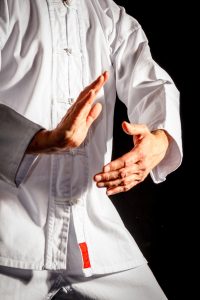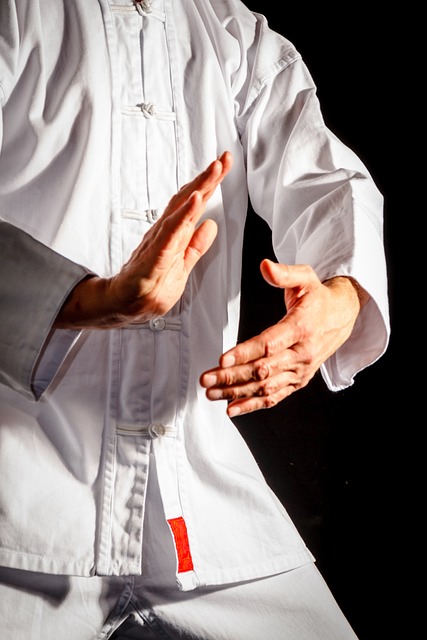The graceful art of Tai Chi has a fascinating history in New Zealand. This ancient Chinese practice, known for its slow, meditative movements, found its way to the shores of Aotearoa decades ago and has since become a cherished part of the nation’s fitness and wellness culture. To understand its journey, we need to trace back to the early immigrants and the cultural exchange that brought Tai Chi to NZ.
The Arrival of Tai Chi in Aotearoa
Tai Chi’s introduction to New Zealand is closely tied to the waves of Chinese immigration in the late 19th and early 20th centuries. These early settlers brought with them not just their hopes and dreams but also their rich cultural practices, including martial arts. Tai Chi, with its roots deeply embedded in Chinese philosophy and tradition, was among these practices.
In the 1960s and 1970s, Tai Chi began gaining popularity beyond the Chinese communities. This era saw the establishment of several martial arts clubs and associations dedicated to Tai Chi, such as the NZ Tai Chi Association, founded in 1973. These organizations played a crucial role in promoting Tai Chi through classes, workshops, and public demonstrations.
Key Figures
One cannot discuss Tai Chi without mentioning Master Ken Holmes, a prominent figure who has significantly influenced the practice here. Master Holmes trained extensively in China and brought back his profound knowledge, where he started teaching Tai Chi in the late 1970s. His efforts have inspired many practitioners and helped establish a strong Tai Chi community.
Another notable name is Margaret Liu, who has been a pillar in promoting Tai Chi for health and wellness. Her contributions through the Tai Chi for Health Institute have made Tai Chi accessible to people of all ages, focusing on its benefits for mental and physical health.
Impact of Tai Chi on New Zealand’s Wellness Culture
Tai Chi’s influence extends beyond martial arts; it’s a cornerstone of the holistic wellness movement in NZ. The practice is now widely recognized for its health benefits, including stress reduction, improved balance, and enhanced flexibility. Many wellness centers and fitness clubs across the country offer Tai Chi classes, integrating it into broader health and fitness regimes.
The government’s health initiatives have also embraced Tai Chi, promoting it as a low-impact exercise suitable for older adults. Programmes like the “Green Prescription” have included Tai Chi as a recommended activity, highlighting its role in promoting a healthy lifestyle.
Tai Chi in Public Spaces
Tai Chi is now a common sight in NZ’s public parks and community centers. Cities like Auckland and Wellington have regular Tai Chi sessions in their parks, attracting practitioners from all walks of life. These sessions not only provide physical benefits but also foster a sense of community and cultural exchange.
The annual World Tai Chi Day, celebrated on the last Saturday of April, sees thousands of people participating in synchronized Tai Chi events across the country. This global event, aimed at promoting the benefits of Tai Chi, showcases the widespread acceptance and enthusiasm for the practice.
The Future of Tai Chi

The future of Tai Chi looks promising, with a growing number of young people showing interest in this ancient art. The integration of Tai Chi into school curriculums and community youth programs is helping to preserve and propagate the practice among the younger generation.
Moreover, the fusion of Tai Chi with other forms of exercise, such as yoga and Pilates, is creating new hybrid workout trends that appeal to a broader audience. This innovative approach ensures that Tai Chi remains relevant and continues to evolve with changing fitness trends.
Challenges and Opportunities
While Tai Chi enjoys a significant following, it faces challenges like any traditional practice. One of the main challenges is maintaining the authenticity of the practice while adapting to modern lifestyles. However, this challenge also presents an opportunity to innovate and find new ways to engage practitioners.
Tai Chi’s Role in Community Building
Tai Chi has significantly contributed to community building, bringing together people of diverse backgrounds through its inclusive practice. The communal aspect of Tai Chi is evident in various ways, creating bonds and fostering a sense of belonging among practitioners. Here are some key points highlighting its role in community building:
- Community Classes and Workshops: Local councils and community centers often organize free or low-cost Tai Chi classes, making it accessible to everyone. These sessions are not only a way to stay fit but also a social gathering where people can connect and support each other.
- Intergenerational Engagement: Tai Chi appeals to all age groups, from young children to the elderly. Family-friendly sessions allow different generations to practice together, promoting mutual understanding and respect within families and the wider community.
- Cultural Exchange: Tai Chi provides a platform for cultural exchange, where participants can learn about Chinese culture and philosophy. This exchange fosters appreciation and respect for diversity, enhancing social cohesion in multicultural neighborhoods.
- Health and Wellness Initiatives: Tai Chi is often integrated into community health programs aimed at improving public health. These initiatives encourage communal participation, where people come together to achieve common health goals, strengthening community ties.
- Public Events and Demonstrations: Events like World Tai Chi Day and local festivals feature public Tai Chi demonstrations. These events attract large crowds, raising awareness about Tai Chi and providing opportunities for community members to interact and bond over a shared interest.
Through these initiatives, Tai Chi plays a vital role in enhancing social connections and building a supportive community environment in New Zealand. Collaboration with health professionals and researchers to study and document the benefits of Tai Chi can further cement its place in the wellness landscape. Initiatives like these will help in educating the public about the scientific basis of Tai Chi’s health benefits, making it more appealing to a skeptical audience.

